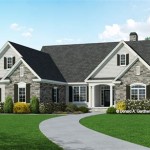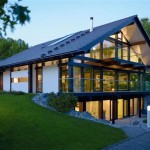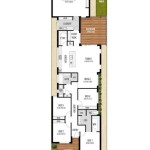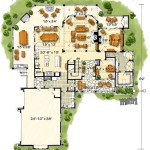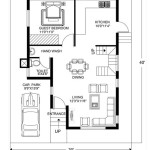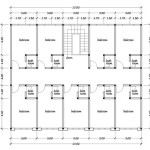Net Positive House Plans: A Guide to Creating Sustainable and Resilient Homes
Net positive house plans focus on creating homes that produce more energy than they consume and have a positive impact on the environment. By incorporating sustainable and resilient design principles, these plans help homeowners reduce their carbon footprint, increase energy efficiency, and create healthier and more comfortable living spaces.
Key Principles of Net Positive House Plans
Net positive house plans are based on several key principles:
- Passive Design: Maximizing natural light, heat, and ventilation to reduce energy consumption.
- Energy Efficiency: Incorporating high-performance insulation, energy-efficient appliances, and LED lighting.
- Renewable Energy: Using solar panels, wind turbines, or geothermal systems to generate renewable energy.
- Water Conservation: Installing water-saving fixtures, rain barrels, and greywater systems to conserve water.
- Sustainable Materials: Utilizing environmentally friendly materials, such as recycled steel, bamboo flooring, and natural stone.
Benefits of Net Positive House Plans
Net positive house plans offer numerous benefits for homeowners:
- Reduced Energy Costs: Produce more energy than they consume, significantly reducing electricity bills.
- Increased Energy Independence: Less reliance on the power grid, providing greater energy security.
- Environmental Sustainability: Reduce carbon emissions and minimize environmental impact.
- Healthier Living: Create indoor environments with improved air quality, natural light, and reduced noise.
- Increased Home Value: Net positive homes are in high demand, leading to increased property value.
Guidelines for Creating Net Positive House Plans
To create net positive house plans, consider the following guidelines:
- Site Orientation: Position the home to maximize passive solar gain while minimizing heat loss.
- Insulation and Air Sealing: Use high-performance insulation and air sealing materials to prevent heat transfer.
- Energy-Efficient Appliances and Systems: Choose Energy Star-rated appliances and install efficient HVAC systems.
- Renewable Energy Sources: Determine the most suitable renewable energy system for the location and budget.
- Water Conservation Measures: Install low-flow fixtures, rainwater collection systems, and use drought-tolerant landscaping.
By following these guidelines, homeowners can create beautiful and functional net positive homes that not only meet their needs but also contribute positively to the environment and their community.

Net Zero Home Design Popular Plans Energy

Net Zero Homes In Modern Design Ecohome

Positive Nrg Triplex Zero Energy Home Plans

Snøhetta S Tilted Zero Energy House Completed In Norway Eco Design Passive

Chicago Net Positive Luxury Home Modern Häuser Von Kipnis Architecture Planning Houzz

Floor Plan Friday Passive House Design

Lincoln Farmhouse A Net Positive Energy Home Zeroenergy Design Boston Green Architect Passive House Zero

Doe Tour Of Zero Wilton Net Positive Home By Energy Vision Homes Department

Passive House Net Zero And Energy Positive Buildings Rlps

A Sustainable Farmhouse Produces More Energy Than It Uses Northshore

